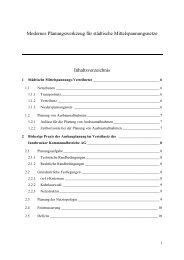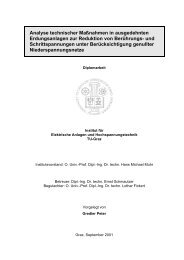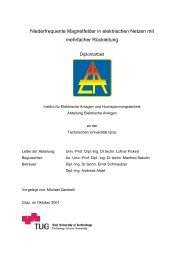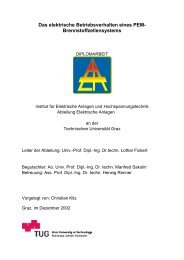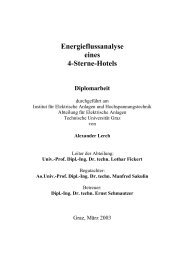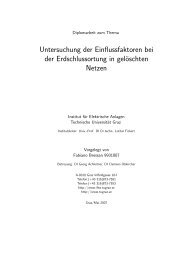Development of a wavelet-based algorithm to detect and determine ...
Development of a wavelet-based algorithm to detect and determine ...
Development of a wavelet-based algorithm to detect and determine ...
You also want an ePaper? Increase the reach of your titles
YUMPU automatically turns print PDFs into web optimized ePapers that Google loves.
Chapter 6<br />
Wavelets<br />
6.1 Introduction<br />
The <strong>wavelet</strong> transform is a new <strong>and</strong> developing branch <strong>of</strong> mathematics. Recently it<br />
has become one <strong>of</strong> the hot points in the research <strong>of</strong> engineering applications. This is<br />
neither a novelty nor a fashion. The <strong>wavelet</strong> transform leads <strong>to</strong> the signal processing<br />
techniques with special characteristics that have been expected for a long time. [6]<br />
The term "<strong>wavelet</strong>" literally mens little wave because a <strong>wavelet</strong> decays quickly (lit-<br />
tle) with oscillations (wave) (see figure 6.1). Although countless functions may be little<br />
waves, the item <strong>wavelet</strong> is reserved for those little waves that are associated with a par-<br />
ticular choice: narrow-b<strong>and</strong> in frequency. Simply, <strong>wavelet</strong>s are window functions not<br />
only in time domain but also in frequency domain. The <strong>wavelet</strong> transform represents a<br />
signal through <strong>wavelet</strong>s. It is a linear transformation much like the Fourier transforma-<br />
tion but with important differences: the <strong>wavelet</strong> transform can localize simultaneously<br />
in time <strong>and</strong> in frequency, adjust the window widths according <strong>to</strong> frequency au<strong>to</strong>mati-<br />
cally <strong>and</strong> allow the flexible selection <strong>of</strong> <strong>wavelet</strong>s <strong>to</strong> match different applications.<br />
The <strong>wavelet</strong> transform as a new item was proposed by Morlet for geophysics signal<br />
processing in 1982 [8], but there was a long time preparation for its development. The<br />
<strong>wavelet</strong> transform was developed as a new theory in mathematics by Meyer, Gross-<br />
mann <strong>and</strong> Daubechies during 1984-1988. In 1989, Mallat proposed the multiresolution<br />
33




